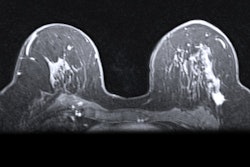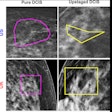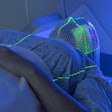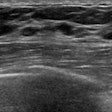Subspecialized breast radiologists interpret the majority of breast imaging exams for U.S. Medicare beneficiaries, according to a study published November 3 in the Journal of the American College of Radiology.
The findings "suggest an accelerating trend toward subspecialization in breast imaging with potential implications for advancing quality of care, optimizing training pathways, and workforce planning," wrote a team led by Tariq Rashid, MD, of Methodist University Cape Fear Valley Health School of Medicine in Fayetteville, NC.
Generalist radiologists offer key services to patients, the team wrote. But it also noted that "the increasingly complicated nature of medical imaging has the potential to create a challenge for radiologists seeking to practice as generalists." More than 90% of radiology residency graduates now pursue specialized fellowship training, and as of 2017, almost half of radiologists practice as subspecialists, Rashid and colleagues explained.
Subspecialization may improve patient care, according to the group.
"Proponents of subspecialization within radiology point to improved outcomes for patients treated by specialists and suggest that subspecialized radiologists may be able to meet increased demands of specialized nonradiologist physicians across various disciplines, including breast imaging," the team wrote.
Rashid et al sought to assess breast imaging productivity trends in the U.S. Medicare population from 2013 to 2022, evaluating subspecialized interpretation trends overall and assessing the information by imaging modality. Study data came from the U.S. Centers for Medicare and Medicaid Services (CMS) databases, categorized by breast imaging (or not) and by imaging modality. The group calculated overall relative value units (wRVUs) and wRVUs for breast imaging exams, as well as year-specific breast imaging case mixes per radiologist.
It found a general trend toward subspecialist interpretation of breast imaging exams, noting that from 2013 to 2022, the percentage of all radiologists submitting breast imaging claims decreased from 46.5% to 34.2% over the study time period, while the percentage of subspecialized breast radiologists submitting claims for breast imaging services increased by 7.1% annually.
The researchers also reported the following:
- The percentage of all radiologists who were breast imaging subspecialists increased from 8.1% in 2013 to 13.4% in 2022.
- Breast imaging wRVUs by breast subspecialists increased by 15.1% annually.
- The measure of 2022 breast imaging services provided by subspecialist breast radiologists varied by imaging modality: 63.7% for mammography, 70% for ultrasound, 80.5% for MRI, and 83% for interventional procedures.
The trend is clear, but more research is needed, according to the team.
"Further research should incorporate clinical outcome data to validate whether increased subspecialization translates to measurable improvements in patient care, changes in patient access, or a need to pivot education and workforce strategies," it concluded.
The complete study can be found here.




















